Table of Contents
Real-time package tracking software is a beacon of operational excellence in logistics. Clients gain unparalleled visibility into the journey of their goods, while businesses harness this technology to streamline their operations. Strided leaps in productivity and profitability result when companies leverage these systems to track shipments meticulously. Thriving businesses around the globe attribute substantial growth to such software’s integration, underscoring its critical role in competitive strategy.
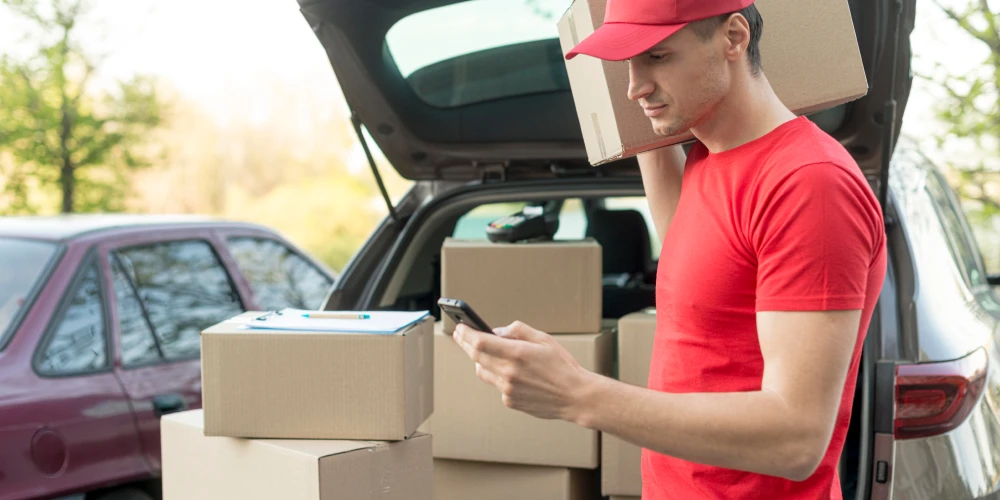
Access to immediate location data fosters trust between consumers and service providers, cemented by transparency and reliability. Transparency bolsters confidence and turbocharges customer service quality, turning first-time users into loyal brand advocates.
An investment in sophisticated package tracking software translates into an empowered and satisfied clientele, propelling a business’s reputation to new heights.
Top 05 Package tracking software
NetworkON
NetworkON is a comprehensive logistics and supply chain management platform that offers end-to-end solutions for businesses to streamline their operations. The platform focuses on enhancing visibility, optimizing routes, and improving delivery efficiency through advanced analytics and real-time tracking.

NetworkON offers robust package tracking capabilities, providing real-time updates and detailed analytics to ensure smooth logistics operations.
Pros:
- Provides real-time tracking and analytics.
- Optimizes delivery routes for efficiency.
- Enhances visibility across the supply chain.
Cons:
- May have a learning curve for new users.
- Could be expensive for smaller businesses.
AfterShip
AfterShip is a leading shipment tracking platform that helps online retailers and businesses manage and track packages across multiple carriers globally. It offers a user-friendly interface and integrates with various e-commerce platforms to provide seamless tracking experiences.
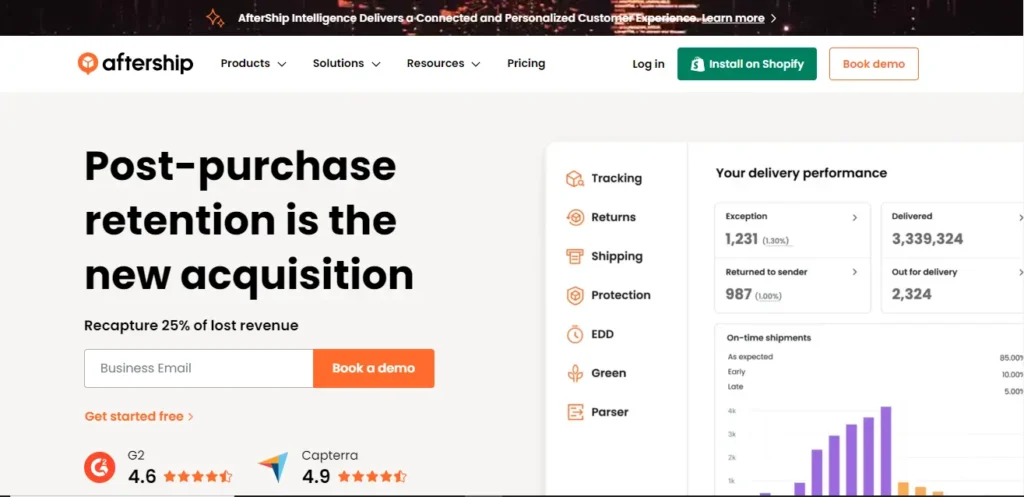
AfterShip excels in package tracking by supporting numerous carriers and offering real-time updates and notifications, ensuring customers are always informed about their shipments.
Pros:
- Supports tracking for multiple carriers worldwide.
- Easy integration with popular e-commerce platforms.
- Provides automated notifications for shipment status.
Cons:
- Advanced features may require a premium subscription.
- Limited customization options for notifications.
ClickPost
ClickPost is a logistics and shipment tracking platform designed to enhance post-purchase experiences for e-commerce businesses. It provides real-time tracking, delivery analytics, and seamless integration with multiple carriers to ensure efficient order management.
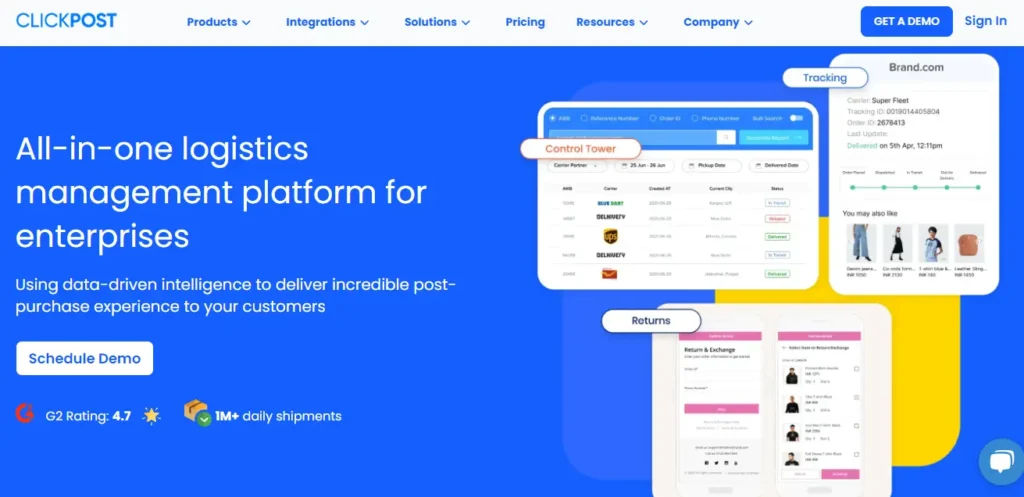
ClickPost offers powerful package tracking solutions with real-time updates and detailed analytics, making it an excellent choice for e-commerce businesses looking to improve their post-purchase processes.
Pros:
- Real-time tracking and detailed delivery analytics.
- Integration with a wide range of carriers.
- Focuses on enhancing post-purchase customer experience.
Cons:
- May require customization for specific business needs.
- Limited features for non-e-commerce businesses.
ClickPost offers powerful package tracking solutions with real-time updates and detailed analytics, making it an excellent choice for e-commerce businesses looking to improve their post-purchase processes.
Shipup
Shipup is a shipment tracking and customer experience platform that aims to transform the post-purchase journey. By providing real-time tracking, branded notifications, and proactive customer support, Shipup helps businesses improve customer satisfaction and loyalty.
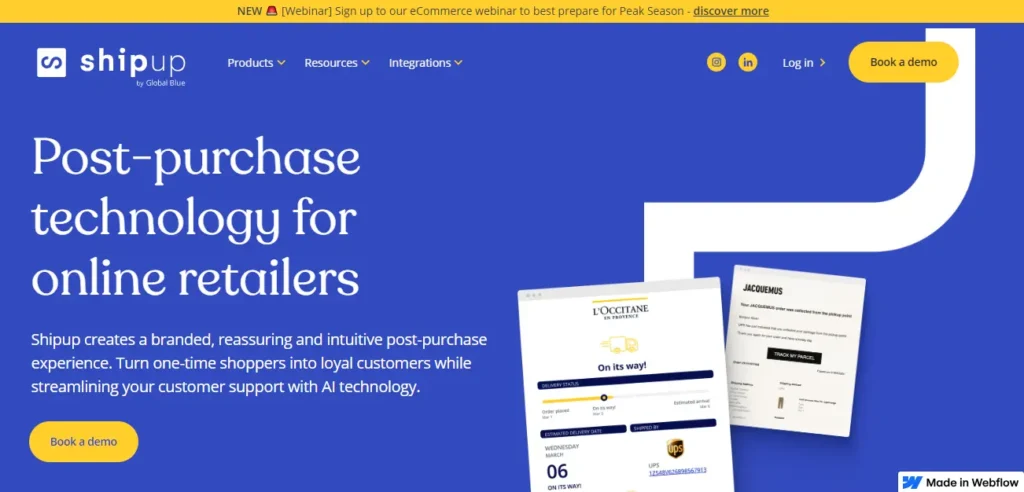
Shipup focuses on providing an exceptional tracking experience with real-time updates and branded notifications, helping businesses keep their customers informed and satisfied.
Pros:
- Offers branded tracking notifications.
- Enhances customer experience with proactive support.
- Real-time tracking and updates.
Cons:
- Primarily focused on customer experience rather than logistics optimization.
- Could be overkill for businesses with simple tracking needs.
LateShipment.com
LateShipment.com is a shipment tracking and delivery optimization platform that aims to help businesses mitigate delivery issues and improve customer satisfaction. It provides real-time tracking, predictive analytics, and automated claims for late deliveries.
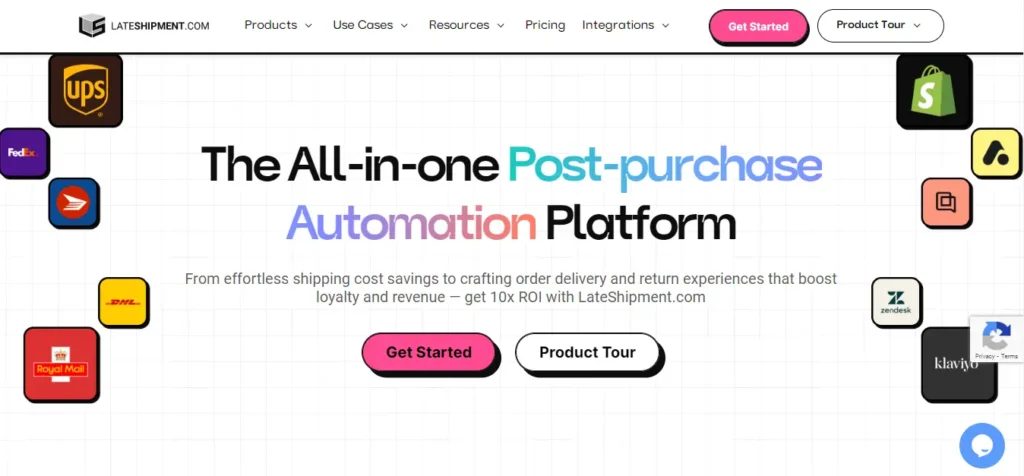
LateShipment.com offers advanced tracking solutions with real-time updates and predictive analytics, ensuring businesses can effectively manage their shipments and address any delivery issues promptly.
Pros:
- Real-time tracking and predictive analytics.
- Automated claims for late deliveries.
- Focus on improving delivery performance and customer satisfaction.
Cons:
- Limited to specific carriers and regions.
- May require integration with existing systems.
Seamless Integration with Shipping Carriers
The rise in global commerce demands solutions capable of navigating complex shipping logistics. The core functionality of real-time package tracking is its seamless integration with many carriers. Multi-carrier support bridges the gap between regional and international shipping protocols and streamlines communication channels. Businesses can track shipments without juggling multiple tracking systems or platforms by leveraging such integrations.
A unified platform brings together the disparate tracking systems of various shipping carriers. Whether a package is crossing the city or the globe, the software provides consistent package tracking labels. This uniformity in tracking methodology simplifies logistics management. It reduces the margin for error, ensuring that businesses and customers alike can pinpoint the exact location of their packages at any given moment.
- Users can access a wealth of information through a single interface by centralizing data from UPS, FedEx, DHL, and numerous other shippers.
- Carrier integration empowers companies to automate tracking updates, saving substantial time in manual data entries and inquiries.
- With critical shipping information readily available, businesses can proactively manage logistics, mitigating potential delays and improving customer service.
When logistics teams implement advanced package tracking software, they notice quicker response times to customer queries regarding shipment whereabouts. Consequently, customer satisfaction scores tend to rise as the uncertainty diminishes. Recognizing the value of integrated shipping carrier information feeds into strategic business decisions that yield positive customer loyalty and operational efficiency outcomes.
Barcode Scanning and RFID Technology: Enhancing Package Tracking Efficiency
Package tracking solution adeptly utilizes barcode scanning and RFID (Radio-Frequency Identification) technologies, each with unique mechanisms and benefits for inventory management. Barcode scanning interprets a visual code, often requiring direct line-of-sight, to track packages through successive delivery stages. On the other hand, RFID uses electromagnetic fields to identify and track tags attached to objects automatically. RFID tags can be read from a distance and through various materials, allowing for greater flexibility in tracking.
The relationship between accurate scanning and appreciable error reduction in the logistics chain is direct. By ensuring that packages are correctly logged at each juncture, package tracking software minimizes the occurrence of lost or misrouted items, thereby enhancing efficiency and reliability in the supply chain.
Package journey streamlining spans from the point of origin to the recipient’s hands. With meticulous tracking at every checkpoint, these technologies provide a seamless transition of packages, improve sorting processes, and foster timely delivery. Package tracking software establishes comprehensive oversight through integration, ensuring a coherent and traceable path until the final destination.
Last-Mile Delivery Optimization
Pioneering package tracking software stands at the forefront of refining last-mile delivery, a segment notoriously fraught with complexity and unexpected hindrances. Through the strategic application of this technology, companies maneuver through these challenges, securing a streamlined distribution process. Smart optimization algorithms within the software focus on identifying the fastest, most cost-effective routes, diminishing the time packages spend in transit.
The symbiotic relationship between last-mile delivery and customer satisfaction must be addressed. Customers increasingly anticipate prompt and precise delivery services. In response, tracking software offers pragmatic insights into the delivery process, enhancing the reliability of service and, consecutively, customer trust. This level of service becomes a keystone for businesses keen on fostering robust client relationships.
Continuous enhancement of delivery services through user feedback has emerged as a vital driver for advancement. Package tracking solutions assimilate input directly from the user base, fine-tuning functionalities to address the exact needs and preferences. This agile approach ensures the software evolves in unison with the dynamic demands of the last-mile delivery landscape.
- Comprehensive strategies the software implements address last-mile delivery challenges, fostering more efficient operations.
- There is a direct correlation between efficiency in last-mile delivery and heightened levels of client satisfaction, which influences loyalty and repeat business.
- Incorporating consumer feedback into software development enables continuous iterative refinement, enhancing unparalleled service.
Mobile Accessibility for On-the-Go Tracking
Mobile accessibility transforms asset package tracking, providing indispensable tools for clients and delivery personnel. The immediate access to tracking information on smartphones and tablets streamlines the delivery process. Integrating mobile tracking features extends beyond convenience; it ensures that all parties have the latest information at their fingertips. This constant connectivity elevates the delivery experience and directly impacts operational efficiency.
A mobile-first strategy enhances communication channels. Delivery updates and notifications sent directly to mobile devices enable real-time communication between couriers and customers. This approach not only enhances customer satisfaction but also contributes to tracking accuracy. Couriers can instantaneously update delivery statuses, while customers can precisely track their packages, reducing errors and miscommunication.
Renowned logistics companies leverage effective mobile tracking implementations. These systems include apps that allow users to view detailed package routes, receive push notifications for delivery updates, and even contact delivery drivers when necessary. Such implementations demonstrate how mobile tracking has become an axis around modern package delivery.
API Integration for E-commerce Platforms
API integration transforms e-commerce logistics, enabling businesses to seamlessly embed real-time package tracking within their platforms. This equips online stores to provide customers with live updates and fosters a more transparent shopping experience. By integrating package tracking software APIs, e-commerce entities can streamline their supply chain processes and offer enhanced service to their end users.
Streamlining eCommerce Logistics through Package Tracking Software APIs
Integrating package tracking software using APIs consolidates various logistics processes. Retailers can automate the transfer of tracking information between carriers and their online storefronts. Consequently, the need for manual input is eliminated, reducing errors and saving time. This efficiency translates into faster delivery times and improved operational effectiveness.
The Advantages of Seamless Tracking Feature Incorporation in Online Shopping Experiences
Customers expect transparency and up-to-date information on their orders. Integrating tracking features into e-commerce platforms satisfies these needs. By doing so, businesses provide a value-added service that enhances credibility and fosters customer loyalty. Additionally, seamless access to tracking information directly from the e-commerce site reinforces a convenient and user-friendly shopping journey.
Automated Notification and Alert Systems
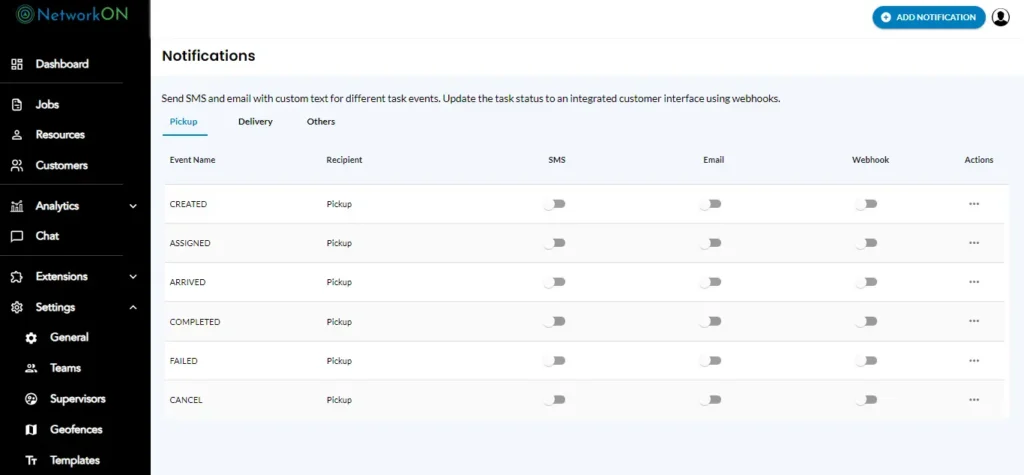
Automated notification and alert systems in package tracking software transform client communication by providing timely and relevant updates without human intervention. Customers receive instant messages conveying the status of their parcels, bolstering confidence and trust in the delivery process. With automation, both sender and recipient remain informed throughout the delivery journey.
Maximizing Engagement with Customizable Alerts
Customizable alerts cater to diverse customer needs and expectations. Users can specify alerts for distinctive stages of the delivery cycle, such as dispatch, in-transit, out-for-delivery, or delivery completion. These tailored notifications ensure that the right information reaches the right user at the optimal time, fostering a sense of personalization and attention to detail.
Proactive Updates: A Strategy for Customer Service Efficiency
Package tracking software issues proactive updates that alleviate the burden on customer service teams. By automatically informing customers of their package’s whereabouts, the volume of inbound queries regarding parcel status diminishes. This allows customer service professionals to focus on resolving more complex issues, streamlining efficiency and effectiveness in their roles.
Data Analytics and Reporting Tools
Delivery package tracking software transcends mere location updates by providing sophisticated data analytics and reporting tools. These systems digest vast quantities of delivery data, drawing patterns and insights that directly influence the bottom line of logistics operations.
By leveraging collected data, companies fine-tune delivery routes, not through trial and error, but through predictive analytics that forecast the most efficient pathways. This optimization reduces delivery times and minimizes fuel consumption, which can lead to significant cost savings.
Actionable insights gathered from delivery and tracking data equip logistics managers with the knowledge to streamline operations. These insights can point to potential bottlenecks or highlight aspects of the service that could benefit from more resources or a revised strategy.
The role of analytics extends to understanding customer behavior. Metrics such as delivery preferences, times, and success rates offer a window into customer expectations and experiences. Using this data, companies craft a delivery experience that aligns with customer desires, potentially enhancing satisfaction and building loyalty.
- Data-driven adjustments to delivery routes result in more efficient operations.
- Actionable insights allow companies to make informed decisions that enhance logistics performance.
- Analysis of customer delivery data aids in tailoring the delivery experience to meet customer expectations.
Customer Experience and Visibility
Package tracking software enhances the bond between businesses and customers by delivering transparency through real-time tracking features. When clients can follow their packages’ journey every step of the way, trust in the service provider increases. This thorough visibility fosters a feeling of control and reassurance for customers awaiting delivery.
Clear, consistent communication is a pillar in cultivating customer loyalty. Package tracking software plays a pivotal role by ensuring customers are informed at every stage of the delivery process. Timely communications about the status of their packages reduce uncertainty and the need for customer service inquiries, saving time both for customers and businesses.
Mastering the Art of Returns with Package Tracking Software
With e-commerce thriving, the ease of returning purchased items has become a differentiator for businesses. A seamless return process is a convenience and helps shape customer loyalty. The advent of sophisticated package tracking software has redefined the handling of returns, turning potential customer frustrations into experiences that encourage repeat business.
Streamlining Return Processes Through Advanced Tracking
Package tracking software serves as a linchpin in simplifying the return journey. Customers initiate returns with confidence, knowing each step is recorded. Retailers also benefit from visibility into the status of returned items, which allows for efficient processing, restocking, or disposal. This transparency reduces errors, saves time, and ultimately cuts costs associated with reverse logistics.
Best Practices for Reverse Logistics Optimized by Tracking Technology
Adopting best practices in reverse logistics is a strategic move improved by tracking innovations. Companies use tracking software to identify returns trends, helping them improve product quality or packaging. Coordination between sales, customer service, and warehouse departments ensures that returns are handled consistently and effectively. Tracking data also informs inventory forecasts, reducing overstock and out-of-stock situations.
- By leveraging detailed insights from return data, businesses optimize their stock levels and enhance their supply chain responsiveness.
- Real-time updates facilitate the swift rerouting of goods to the best location, whether a retail outlet, a warehouse, or a recycling center, thereby boosting sustainability efforts.
- Custom notifications and alerts keep the customer and business informed throughout the return, cultivating a transparent and trusted relationship.
Ultimately, injecting package tracking software into the process empowers businesses to transform reverse logistics into a strategic advantage. The functionality not only pleases customers with hassle-free returns but also provides the data and efficiency needed to refine the reverse supply chain.
Scalability and Flexibility in Operations
Business growth demands tracking solutions that seamlessly scale alongside the expanding operational needs. Scalability in package tracking software transcends functionality; the software must sustain high performance even as demand rises. Users expect the ability to handle increasing shipping and mail volumes with the same efficiency and accuracy as with smaller volumes.
- Package tracking platforms accommodate growth without interruption to service or degradation in user experience.
- They provide tools that allow companies to adjust to fluctuating volumes, a standard occurrence during peak seasons, sales, and promotional periods.
Such platforms implement advanced algorithms that anticipate the need for increased capacity, ensuring uninterrupted service during volume spikes. Emerging technologies are often embedded into these systems to adapt to market changes and evolving business models.
Ultimately, the flexibility of package tracking software underpins a company’s ability to adapt swiftly to market shifts. Expansion into new markets or scaling operations to suit customer demands are benchmarks of such flexibility. Reflecting on this, companies leverage these scalable tracking solutions to secure a competitive edge and maintain customer satisfaction.
Supply Chain Transparency and Accountability
Accurate tracking information disseminated among all stakeholders marks the beginning of transparency in supply chain management. As packages move from origin to destination, each stakeholder, from supplier to customer, gains access to pertinent tracking information. This accessibility ensures that accountability is not a mere concept but a practice embedded within the logistic processes.
Package tracking software is pivotal in documenting and reporting every movement and transaction. With precision, these technological tools capture data, create logs, and provide reports that shed light on the journey of each parcel. In doing so, software systems leave a trail of evidence that can be audited, fostering an environment where accountability is not an option but a requirement.
Data visibility significantly augments trust in supply chains. When information is not merely collected but shared, every participant in the chain can plan, anticipate, and react to logistical events with confidence. The software is the backbone of this shared data visibility, clearly showing the supply chain’s efficiency and integrity.
- Stakeholders can track package progress in real-time, ensuring that every handoff in the supply chain is visible and recorded.
- A shared platform for tracking information reinforces collective responsibility and diminishes ambiguity in the event of issues.
- Trust grows when customers, vendors, and partners can independently verify the status and history of their products.
Fraud Detection and Security Features
Package tracking software protects against the multifaceted threats of mail theft and fraud. By leveraging advanced security protocols, these systems scrutinize patterns and highlight irregularities, thus anticipating potential fraudulent activities. Tracking features are meticulously designed to trace packages throughout their journey, offering a comprehensive shield that deters theft and ensures the integrity of deliveries.
Security measures within package tracking software are not static; they evolve as threats become more sophisticated. Sophisticated encryption of data at rest and in transit, multi-factor authentication for access control, and continuous monitoring of system activities constitute a formidable defense against unauthorized access and data breaches.
- Implementing cutting-edge software tools equips logistics companies with the ability to promptly identify and respond to security incidents.
- Minimizing risks encompasses ongoing analysis of tracking data, which can reveal discrepancies that may indicate attempts at fraudulent behavior.
Businesses adopting package tracking with enhanced security features report significant reductions in package tampering and theft incidents. Concrete examples include distribution centers using geofencing technology to receive alerts if packages deviate from predetermined routes, thereby mitigating the risk of diversion by fraudulent actors. Other cases highlight the successful interception of stolen goods through real-time alerts that enabled rapid response and recovery.
Navigate Customs with Package Tracking Software
Package tracking software simplifies navigation through complex customs procedures, seamlessly integrating international logistics. Users swiftly adapt their operations to align with varying international regulations, ensuring compliance and minimizing potential delays. This technology becomes instrumental in streamlining cross-border deliveries, offering efficient track and trace systems that bridge the gap between domestic efficiency and the intricacies of international freight.
Integrated Customs Processes
Effective software solutions offer tools tailored to the unique demands of navigating international borders. These include itemized commodity tracking, documentation management for customs clearance, and real-time updates on shipments as they clear through checkpoints. The agility provided by these systems allows for proactive responses to customs holding patterns, thereby expediting the overall process.
Regulatory Adaptation for Global Shipping
Compliance with international regulations is a non-negotiable aspect of global commerce. Package tracking platforms are, therefore, designed to be dynamic, adjusting to shifts in global trade laws and standards. By leveraging updated databases and regulatory information, these tracking systems enable shippers to configure their dispatches to meet the exacting standards set by different countries.
Efficiency in Cross-Border Deliveries
The efficiency of cross-border deliveries hinges on precise and timely movements facilitated by robust package tracking systems. Such systems provide detailed insights into every phase of the international shipping process. The ability to monitor packages through foreign corridors contributes to reducing idle times at borders, encouraging seamless transitions between carriers, and offering a bird’ s-eye view of logistics at a global scale. Users experience heightened control over their international shipments, fostering confidence in their ability to deliver to customers worldwide.
Sustainability in Logistics Through Route Optimization
Optimized routing, enabled by advanced package tracking software, directly decreases the environmental footprint of shipping and delivery operations. By selecting the most efficient routes, less fuel is consumed, reducing greenhouse gas emissions.
Tracking software allows shippers to balance speed and cost against environmental impact. The optimal route is not necessarily the fastest or the cheapest but rather the one that offers the best compromise between these factors while minimizing environmental harm.
- Eco-Friendly Routing: Minimizes carbon footprint by choosing the most fuel-efficient paths.
- Cost-Effective Deliveries: Reduces operational expenses through intelligent path selection, reducing unnecessary mileage.
- Advancements in Technology: Incorporates emerging trends such as electric vehicles into the equation for sustainable logistics.
Innovations in logistics prioritize sustainability alongside operational efficiency. Electric delivery vehicles paired with smart routing algorithms signify a trend toward greener practices. Software that supports route optimization can also integrate with vehicles designed to reduce emissions, further enhancing the eco-friendly aspect of this technology.
Key Takeaways
- Enhanced Operational Efficiency: Package tracking software significantly improves operational efficiency by providing real-time tracking updates and analytics, optimizing delivery routes, and integrating seamlessly with various carriers.
- Customer Satisfaction Boost: Real-time visibility into shipment status fosters customer trust and satisfaction, reducing uncertainty and enhancing overall service quality.
- Security and Fraud Prevention: Advanced security features within tracking software help mitigate risks such as theft and fraud, ensuring the integrity and safety of deliveries.
- Sustainability in Logistics: Package tracking software supports sustainable practices in logistics by optimizing routes and reducing fuel consumption, contributing to environmental conservation efforts.
- Business Growth and Adaptability: Tracking software offers scalable solutions that accommodate growth and fluctuations in shipping volumes, supporting business expansion and adaptation to market demands.
Conclusion: Explore the Full Potential of Package Tracking Software
Comprehensive package tracking software enhances operational efficiency, elevates customer satisfaction, and bolsters security measures. Businesses experience transformative results:
- Packages reach destinations faster.
- Customers remain informed at every step.
- Security protocols mitigate risks related to theft, fraud, and mismanagement.
Logistics and shipping companies are on the precipice of change; implementing robust package tracking platforms is not just a strategic move but a keystone in the architecture of modern delivery services. With customers demanding transparency and businesses striving for lean operations, the right-tracking solution becomes an indispensable ally.
Access our comprehensive guide or sign up for a free software trial to better understand how package tracking software can revolutionize your operations. Expert guidance awaits through personalized consultations, ready to tailor tracking solutions to your unique logistical challenges.
Unlock the future of logistics with NetworkON’s state-of-the-art package tracking software. Experience real-time visibility, enhanced efficiency, and unparalleled customer satisfaction. Explore our comprehensive guide or sign up for a free trial today. Let our experts customize a solution for your unique needs.
Frequently Asked Question
How does package tracking software improve customer satisfaction?
Package tracking software provides real-time updates on shipment status, which helps customers stay informed about their deliveries. This transparency reduces uncertainty and enhances trust, leading to improved customer satisfaction.
What are the key benefits of using package tracking software for businesses?
Businesses benefit from increased operational efficiency, better route optimization, enhanced security against theft and fraud, and improved customer service. These advantages collectively contribute to cost savings and competitive advantage.
Can package tracking software integrate with existing e-commerce platforms?
Many package-tracking software solutions offer APIs for seamless integration with e-commerce platforms. This integration lets businesses provide customers with live tracking updates directly from their online store, enhancing the overall shopping experience.
How does package tracking software support sustainability in logistics?
Package tracking software facilitates route optimization, which reduces fuel consumption and greenhouse gas emissions. Businesses can minimize their environmental impact by choosing the most efficient delivery routes while improving operational efficiency.



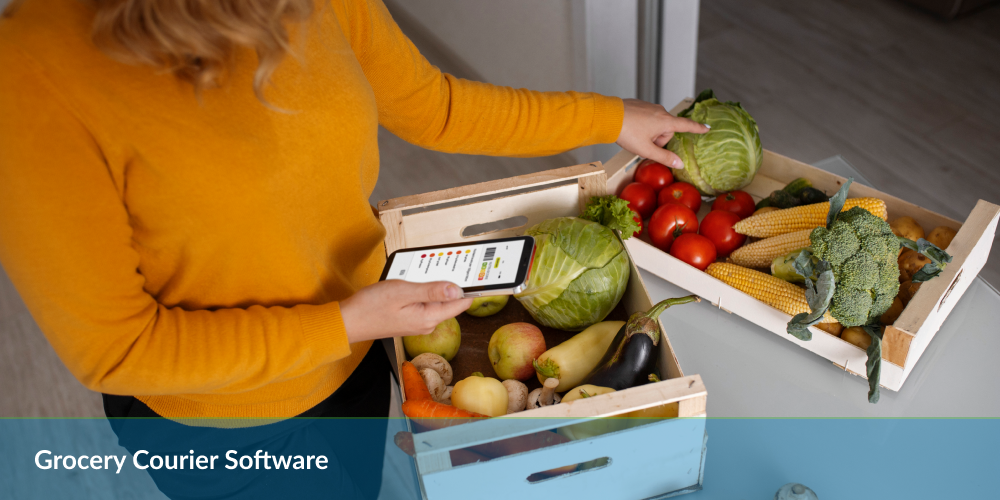
0 Conversations